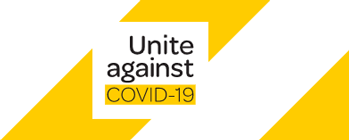What you need to know about
COVID-19 | Click here

What you need to know about
COVID-19 | Click here

Friday September 23, 2016 10:11
Under the new Health & Safety at Work Act, assessment of the risk/s associated with individual hazards is a cornerstone of the emphasis being placed on hazard management. Gaining an understanding of the risk assessment and implementation of control measures is vital to both protecting workers and your business.
This article aims to answer some basic questions on risk assessment such as:
What is a risk assessment?
One definition of risk assessment is:
“….an examination of what, in your workplace, could cause harm to people, so that you can establish what are the appropriate controls, to prevent harm….”
A risk assessment is a vital element of health and safety management and its main objective is to determine the controls required to keep workers safe and comply with statutory duties under the Health & Safety at Work Act 2015 and the associated regulations, by reducing the chance of incidents / accidents within your workplace.
Why do a risk assessment?
A risk assessment will protect your workers & others, plus your business, as well as assisting in complying with the law. As for when to do a risk assessment, it should simply be conducted before you or any other workers conduct any work which presents a risk of injury or ill-health.
A group of people from your organisation need to attend some form of Risk Assessment Training, as it will ensure that these people are competent within your organisation and will gain abilities such as hazard identification, ability to categorise and evaluate risk/s. These abilities will allow a ‘suitable and sufficient’ risk assessment to be conducted within your own organisation.
How to do a risk assessment
Five steps to risk assessment can be followed to ensure that your risk assessment is carried out correctly and the agreed control measures implemented. The five steps are:
Step 1: Identify the hazards
In order to identify hazards you need to understand the difference between a ‘hazard’ and ‘risk’. A hazard is ‘something with the potential to cause harm’ and the risk is ‘the likelihood of that potential harm being realised’.
Hazards can be identified by using a number of different techniques such as walking round the workplace, consulting with your workers, reviewing accident/incident reports etc.
Your workers can use Securo Form 009a – Worker Hazard Report, to report hazards. Make these forms available to workers in their lunchroom or other accessible locations.
The worker initially completes the first three fields on Page 1 of Form 009a, and hands it to either the manager of their work area, or their H&S representative.
Step 2: Decide who might be harmed and how
Once you have identified a hazard, you need to understand who might be harmed and how, it could be your workers, other workers, or members of the public.
Step 3: Assess the risks and decide on control measures
After ‘identifying the hazard and deciding who might be harmed and how, you are then required to protect people from harm. The hazards can either be:
Securo Form 009a - has a Risk Assessment Matrix on Page 2. Best Practice requires that an appropriate manager, H&S Representative and a group of workers who may be exposed to the identified hazard are all involved in the risk assessment process. This ensures a consensus of experience is utilised in assessing the risk and agreeing on the best actions to control it. The participants should all be trained in Risk Assessment to ensure a quality procedure.
Step 4: Record your findings
The assessment process and agreed controls should be recorded, it’s best practice to record the findings:
The Hazard/Risk Register & Control Plan also allows you to schedule & record regular reviews.
Step 5: Review your hazards and the associated risk assessments and update as and when necessary
You should never forget that few workplaces stay the same and as a result risk assessments should be reviewed on a regular basis, the higher the risk rating, the more frequent the reviews should be undertaken. Always record when a review was undertaken, who was involved and have all participants initial the review documents.
We suggest Securo clients print this and file it in Section 3 of your Securo manual for future reference.
It may also be useful for your workers to have this information available to them. Print a copy and have available with the “Worker Hazard Reports” Form 009a.
We hope this has given you more insight into the risk assessment process.